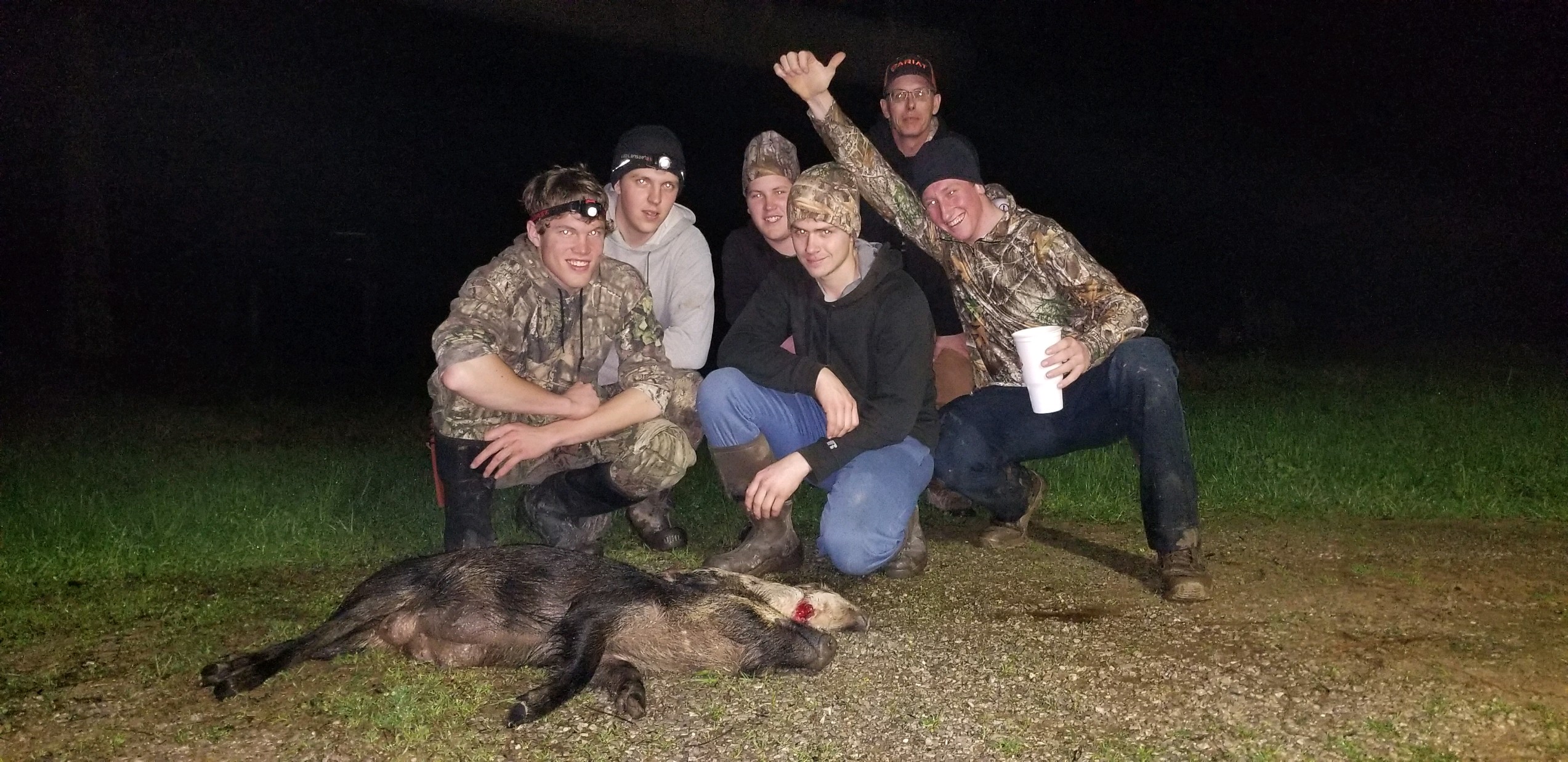If you’ve never stalked wild hogs under a spring moon, you’re missing out on one of the most exciting and effective hunting experiences the season has to offer. As temperatures rise and days stretch longer, hogs adapt by going nocturnal—making nighttime the prime time to get after them.
Whether you’re new to the hunt or looking to refine your setup, here’s what you need to know about spring hog hunting after dark—from gear and regulations to strategies that actually work.
Why Hunt Hogs at Night in Spring?
Spring hog hunting isn’t just a thrill—it’s also practical. As the weather warms, wild pigs become more active after sunset to avoid the daytime heat. Fields, river bottoms, and feeders see peak hog activity between dusk and dawn. Hunting them at night gives you an edge they won’t see coming.
Plus, in many states—especially in the South—wild hogs are considered nuisance animals. That means extended hunting seasons, relaxed regulations, and in some areas, no bag limits.
Know the Laws Before You Head Out
Before you grab your rifle and night vision, check your local and state regulations. Laws regarding night hunting vary widely:
- In Texas, night hunting hogs is legal year-round on private land with landowner permission. You can use night vision, thermal optics, and even suppressors.
- In Georgia, you can hunt hogs at night on private land but need to follow rules about light types and safety.
- On public land, many states restrict night hunting or limit it to specific times of year.
Pro tip: Call your local game warden or visit your state’s wildlife website to avoid surprises.
Essential Gear for Night Hog Hunting
Hunting pigs after dark requires the right gear. You can’t just wing it and hope for the best. Here’s what seasoned hunters swear by:
🔭 Thermal Optics or Night Vision
Thermal scopes allow you to see body heat signatures, which is a game changer in total darkness. Night vision also works well, especially with IR illuminators.
🔦 Red or Green Hunting Lights
If you’re not running optics, a high-powered green or red LED light mounted to your weapon helps illuminate hogs without spooking them. Avoid white light—it’ll blow your cover.
🎯 Rifle Caliber & Ammo
Popular choices include:
- .223/5.56 with heavier grain bullets
- .308 for maximum knockdown power
- 6.5 Grendel for flat shooting and solid terminal performance
Make sure your weapon is zeroed in with your nighttime setup—what works at noon may not cut it at midnight.
🥾 Comfortable & Quiet Boots
You’ll be doing a lot of stalking, especially near feeding areas. Get boots that are quiet, waterproof, and supportive—muddy spring nights can get slick fast.
Where to Hunt Hogs After Dark
Finding hogs is half the battle. Look for:
- Fresh rooting signs: Turned-over soil, wallows, and tracks near water sources
- Active feeders or bait stations
- Agricultural fields: Corn, peanuts, and oats attract hogs like magnets
Use trail cameras to monitor movement patterns. In spring, hogs often hit fields and feeders after sundown, with peak activity between 9 PM and 2 AM.
Hunting Tactics That Work
Here’s what separates successful night hunters from frustrated ones:
1. Bait and Wait
Set up over a feeder or bait pile. Be patient, stay still, and watch the wind.
2. Spot and Stalk
Use thermal optics from a high vantage point or vehicle, spot hogs, and make your move. Stay downwind and use terrain to your advantage.
3. Calling
Hog distress calls or piglet squeals can draw in curious or aggressive boars. Use sparingly—it can spook them too if overused.
4. Suppressors for Stealth
If legal in your state, a suppressor reduces sound and muzzle flash, allowing multiple shots before pigs scatter.
Safety First – It’s Not Just You Out There
Night hunting adds a level of danger—low visibility, possible encounters with snakes, or even other hunters.
Tips to stay safe:
- Always let someone know your exact location and expected return time.
- Carry a GPS or mapping app with offline capability.
- Wear a headlamp with red light mode to avoid blowing your night vision.
- Know your target and what’s beyond it—hogs can move fast and unpredictably in the dark.
Final Thoughts
Spring hog hunting after dark is a challenge—but one that’s loaded with reward. Whether you’re protecting farmland, filling the freezer, or chasing the adrenaline, nothing beats the rush of hearing hogs crunch through the brush and knowing you’re ready.
With the right gear, tactics, and legal knowledge, you’ll not only up your chances of success, but you’ll also experience the wild in a whole new way.
Got your own night hunting tips or wild pig stories? Drop a comment or share your photos—we love hearing from fellow nocturnal hunters!


